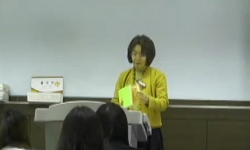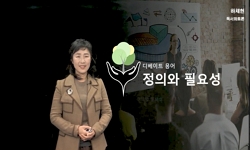The purpose of this thesis is to find what effects Slow-Reading instruction using English children’s literature has on students’ reading ability and perception of English learning and to provide effective teaching materials and approaches for prim...
http://chineseinput.net/에서 pinyin(병음)방식으로 중국어를 변환할 수 있습니다.
변환된 중국어를 복사하여 사용하시면 됩니다.
- 中文 을 입력하시려면 zhongwen을 입력하시고 space를누르시면됩니다.
- 北京 을 입력하시려면 beijing을 입력하시고 space를 누르시면 됩니다.
아동문학을 활용한 영어 슬로리딩 수업이 학생의 영어 읽기 능력 및 영어 학습에 대한 인식에 미치는 영향 = The effects of Slow-Reading instruction using English children’s literature on primary students’ reading ability and perception of English learning
한글로보기https://www.riss.kr/link?id=T16193018
- 저자
-
발행사항
대구 : 대구교육대학교 교육대학원, 2022
-
학위논문사항
학위논문(석사) -- 대구교육대학교 교육대학원 , 초등영어교육 , 2022. 2
-
발행연도
2022
-
작성언어
한국어
-
주제어
아동문학 ; 슬로리딩 ; 읽기 능력 ; 영어 학습에 대한 인식
-
발행국(도시)
대구
-
형태사항
125 ; 26 cm
-
일반주기명
지도교수: 조현희
-
UCI식별코드
I804:22009-200000592712
- 소장기관
-
0
상세조회 -
0
다운로드
부가정보
다국어 초록 (Multilingual Abstract)
The purpose of this thesis is to find what effects Slow-Reading instruction using
English children’s literature has on students’ reading ability and perception of English
learning and to provide effective teaching materials and approaches for primary
English classes.
The participants of this study were 27 fifth grade-level students in M public
elementary school in Gyeongsangnamdo province. In the survey of the participants,
the researcher examined the experience of private education, type and duration of it,
experience of English literature and interest in English. There was a difference in the
amount of exposure to English and interest in English. In the research process, the
researcher modified and supplemented instruction activities and schedules by
reflecting the above results.
Among English children’s literary works, children’s books and poems were selected
considering the English ability level of students and the achievement standards of
fifth graders. The pre-reading, mid-reading, post-reading activities were planned
using the Slow-Reading method. Before the start of the study class, tests of reading
ability and the perception of English learning were conducted. After the study class,
the researcher conducted those tests again to check if any change occurred. Also,
interviews were conducted to understand students’ thoughts and opinions about the
lessons in the middle of the study and they were used as a resource for the
researcher's reflection on the Slow-Reading lessons and to make a necessary
modification of the upcoming lessons. The study lasted eighteen weeks and 27th
periods.
The conclusions obtained from this research are as follows:
First, Slow-Reading instruction using children’s English literature has had a
significant effect on improving reading ability on fifth-grade elementary school
students. The average score after the study was all increased but only the reading
accuracy showed significant differences compared to vocabulary and content
understanding. Therefore, Slow-Reading class helped the experimental group to
improve the reading ability. It led to the conclusion that it had a positive effect on
the improvement of reading accuracy among reading skills.
Second, it was confirmed that Slow-Reading classes using English children’s
literature improved confidence in the students' perception of English learning. The
researcher organized the class in which students could expand their thinking by
means of English, rather than as a place where they are evaluated by their English
skills. This way students felt secure in the class.
Third, Slow-Reading lessons using English children’s literature contributed to
improving students' interest in English learning. Students’ interest in English has
increased by using English as a means to participate in various play, games,
presentations, questions, and creative activities.
Fourth, it was shown that Slow-Reading classes using English children’s literature
were effective in having students recognize the value of English learning. It seems
that they realized the necessity of English in the process of reading English literature
and creating their own literary works.
Fifth, Slow-Reading classes using English literature had a significant effect on
students' motivation of learning English. The researcher's adjustment and
modification of activities by collecting students’ opinion through the interviews in the
middle of the research period and switching to student-led activities contributed to
their motivation for learning.
Sixth, there were fewer positive changes in students' perception of learning
English than changes in their reading ability. Slow-Reading classes involved more
activities for creative exploration. It means that students spent more time on English
classes than usual. As a result, it is reasoned that students were somewhat tired of
English classes.
Seventh, after the Slow-Reading class using English children’s literature, students
became positive about the Slow-Reading class. More than 80 percent of the students
said reading became much easier and that they would use the various reading
methods they learned in slow reading in their reading out of school, as the barriers
to reading have been lowered while learning through various reading methods in
Slow-reading class.
Based on the results of the study, the following suggestions can be made.
First, this study was conducted in a limited number of 27 students in one class,
and without the control group, so the objective effect was not proven. Further
research is needed to compare data with control groups and increase the number of
students for research classes.
Second, the study was conducted one to two times a week for about four months
which is relatively a short period of time. In future studies, it is necessary to
conduct a study for over a longer period of time.
Third, various teaching methods and materials on Slow-reading classes using
English literary works should be explored. Research on Slow-reading classes using
various English children's literature that fits the English level of students is needed.
Fourth, Slow-Reading classes in Korean classes are officially included in the
curriculum, but little research is done on Slow-reading classes in English classes.
More active research is needed.
국문 초록 (Abstract)
본 연구의 목적은 영미 아동문학을 활용한 영어 슬로리딩 수업의 긍정적 효과를 알아보기 위해 학생들의 읽기능력과 영어 학습에 대한 인식에 어떤 영향을 미치는지 규명하고 학교 현장에 ...
본 연구의 목적은 영미 아동문학을 활용한 영어 슬로리딩 수업의 긍정적 효과를 알아보기 위해 학생들의 읽기능력과 영어 학습에 대한 인식에 어떤 영향을 미치는지 규명하고 학교 현장에 아동문학작품을 활용한 슬로리딩 수업 교수 방안에 대한 다양한 자료를 제공하는데 있다. 위 목적을 위해 다음과 같이 실행 연구를 진행하였다.
연구 참여자는 경상남도 소재 M 공립 초등학교 5학년 27명의 학생들이며, 연구 기간은 총 18주간, 27차시였다. 연구 참여자의 기초 설문에서 사교육 경험 및 유형과 받은 기간, 영미 아동문학작품을 읽은 경험 유무, 영어수업과 영어 학습에 대한 흥미도를 조사하였고 영어에 대한 노출량, 흥미도에 차이가 있다는 것을 알 수 있었으며 사전 읽기 능력 평가에서 수준별 분포도 다양함을 확인할 수 있었다. 연구 과정에서 위 결과를 반영하여 수정·보완하며 연구 수업을 진행하였다.
영미 아동문학 작품 중 학생들의 수준과 초등학교 5학년 성취기준을 고려하여 동화책과 시를 선정하였고 슬로리딩 방법을 활용하여 읽기 전, 중, 후 활동을 교육과정을 재구성하여 계획하고 진행하였다. 연구 수업 시작 전 사전 읽기 능력 평가와 영어 학습에 대한 인식 검사를 실시했고 연구 수업이 끝난 뒤 사후 읽기 능력 평가 및 영어 학습에 대한 인식 변화를 위해 검사를 한 번 더 진행하였다. 또한 연구 수업 중간에 학생들의 연구 수업에 대한 생각과 의견을 듣고자 면담을 진행하여 이 후 수업 계획에 수렴된 의견을 반영하였다. 본 연구가 학습자들의 읽기 능력과 영어 학습에 대한 인식에 어떤 영향을 미치는 지 분석한 결과는 다음과 같다.
첫째, 영미 아동문학작품을 활용한 슬로리딩 수업이 연구 참여자들의 읽기 능력 향상에 유의미한 효과가 있었음을 알 수 있었다. 읽기능력의 하위요인을 세부적으로 나누어 읽기 정확성, 어휘, 내용 이해적 측면에서 분석해보았을 때, 읽기능력 가운데 읽기 정확성 향상에 긍정적인 영향을 끼친다는 결론에 도달할 수 있었다. 이는 읽기 과정에서 스스로 어휘의 뜻을 추론하고 사전 찾기 활동을 반복적으로 실시한 것에 대한 효과가 반영된 것으로 보인다.
둘째, 영미 아동문학을 활용한 슬로리딩 수업이 영어 학습에 대한 인식에서 자신감을 향상시킨 것을 확인할 수 있었다. 연구자는 학생들의 영어 능력 차이로 인해 서열이 나눠지는 활동이 아니라 영어를 하나의 수단으로 사고를 확장할 수 있는 슬로리딩 활동으로 수업을 구성하였는데, 이는 학생들이 자신의 영어 능력과 무관하게 활동에 참여할 수 있다는 인식을 주어 수업에서 안정감을 느낄 수 있었음을 짐작할 수 있다.
셋째, 영미 아동문학을 활용한 슬로리딩 수업이 영어 학습에 대한 인식에서 학습의욕에 유의미한 효과가 있다는 것이 검증되었다. 이는 일률적인 교수·학습방법을 탈피하고 교사가 계획한대로만 수업을 이어나가는 것이 아니라 중간 면담을 통해 학생들의 의견을 수렴하여 활동을 재구성한 것과 배움 중심의 학생 주도적 활동 구성이 학습 동기향상에 기여한 것으로 보인다.
넷째, 영미 아동문학을 활용한 슬로리딩 수업이 영어 학습에 대한 인식 중 영어학습의 가치를 알게 하는 데 효과가 있었음을 알 수 있었다. 학습자들이 직접 알고 있는 영어 지식을 활용하여 영미 문학 작품을 읽고 스스로 문학 작품을 창작해나가는 과정에서 영어의 필요성을 깨달은 것으로 보인다.
다섯째, 영미 아동문학을 활용한 슬로리딩 수업이 영어 학습에 대한 인식에서 흥미를 향상시키는 데 기여한 것을 알 수 있었다. 학생들이 무의식적으로 영어를 수단으로 활용하여 다양한 놀이·게임, 발표, 질문, 창작 활동에 참여할 수 있도록 하여 영어에 대한 관심이 높아진 것으로 보인다.
여섯째, 읽기 정확성과 능력의 변화에 비해 학습 인식의 긍정적인 변화는 적은 편인 것을 알 수 있다. 영어교과 수업 외, 추가적으로 창의적 체험활동시간을 활용하여 영어 슬로리딩 수업을 진행하면서 결과적으로 주간 영어교과 시수보다 많은 시간을 영어 수업에 할애하게 되었고 이는 학생들의 영어 수업에 대한 피로도가 어느 정도 있었을 것으로 추정된다.
일곱째, 영미 아동문학을 활용한 슬로리딩 수업 후 학생들은 슬로리딩 수업에 대해 긍정적 인식을 가지게 되었음을 알 수 있었다. 영어 읽기가 좀 더 쉬워졌으며 슬로리딩에서 배운 다양한 읽기 방법을 실생활에서 활용할 것이라고 답한 학생이 80%이상 이었으며 이는 다양한 읽기 방법 배우면서 읽기에 대한 장벽이 낮아졌기 때문이다.
위의 결과를 토대로 다음과 같은 제언을 하고자 한다.
첫째, 이 연구는 한 학급 학생 27명을 대상으로 한정하여 진행된 연구로 비교집단이 없는 상태에서 연구가 진행되었다는 점에서 한계가 있다. 그러나 질적 자료를 보완적으로 사용하여 연구 참여자들의 변화를 관찰했다는 점에서 한계를 어느 정도 극복했다.
둘째, 약 4개월간 일주일에 1~2번 정도씩 짧은 기간 동안 적은 횟수로 이루어졌기 때문에 장기간에 걸쳐 연구가 진행되었을 시에 나타날 수 있는 결과를 예측할 수 없다. 후속 연구에서는 기간을 늘려 연구를 장기간에 걸쳐 진행할 필요가 있다.
셋째, 영미 아동문학을 활용한 슬로리딩 수업에 대한 다양한 교수 방안과 자료가 연구되어야 한다. 본 연구에서는 연구자의 역량으로만 교육과정이 재구성되어 슬로리딩의 활동이 연구 수업 중 활용한 영미 아동문학 작품으로만 한정되어있다. 따라서 학생들의 수준을 아우르는 다양한 영미 아동문학 작품을 활용한 슬로리딩 수업에 대한 연구가 필요하다.
넷째, 국어 교과에서의 슬로리딩 수업은 교육과정 안에서 한권읽기, 온 책읽기라는 명칭으로 공식적으로 이루어지고 있으나 영어 교과와 접목한 슬로리딩 수업에 대한 연구는 현재 미흡하며 그 효과를 증명하기 위한 연구가 더욱 더 활발히 진행될 필요가 있다.
목차 (Table of Contents)
- Ⅰ. 서 론 1
- 1. 연구의 필요성 및 목적 1
- 2. 연구 문제 4
- 3. 연구의 제한점 4
- Ⅱ. 이론적 배경 5
- Ⅰ. 서 론 1
- 1. 연구의 필요성 및 목적 1
- 2. 연구 문제 4
- 3. 연구의 제한점 4
- Ⅱ. 이론적 배경 5
- 1. 초등영어 문식력 5
- 1.1. 문식력의 정의 5
- 1.2. 다섯 가지 문식 요소 개념 6
- 1.3. 문식력 향상을 위한 문자지도 접근법 10
- 2. 슬로리딩 13
- 2.1. 슬로리딩의 정의 13
- 2.2. 슬로리딩 수업의 원칙 14
- 2.3. 초등영어수업에서 슬로리딩 활용 방안 17
- 3. 아동문학 19
- 3.1. 아동문학의 정의 19
- 3.2. 아동문학의 가치 20
- 4. 선행연구 23
- 4.1. 초등영어 문식력에 관한 연구 23
- 4.2. 슬로리딩에 관한 연구 24
- 4.3. 초등영어 아동문학에 관한 연구 26
- Ⅲ. 연구 방법 28
- 1. 연구 참여자 28
- 1.1. 연구 참여자의 구성 현황 28
- 1.2. 연구 참여자의 특징 29
- 1.3. 연구 참여자의 수준별 분포 현황 30
- 2. 연구 기간 및 절차 31
- 3. 연구 설계 32
- 3.1. 실험 설계 32
- 3.2. 슬로리딩 수업을 위한 아동문학 작품 선정 33
- 3.3. 수업 설계 34
- 4. 자료 수집 및 분석 41
- 4.1. 사전·사후 읽기 능력 검사지 41
- 4.2. 영어 학습에 대한 인식 사전·사후 검사지 42
- 4.3. 슬로리딩 수업에 대한 인식 사후 설문지 43
- 4.4. 학생 활동지 44
- 4.5. 학생 면담 44
- 4.6. 자료 분석 방법 44
- Ⅳ. 연구 결과 46
- 1. 읽기 능력의 변화 46
- 2. 영어학습에 대한 인식 변화 48
- 3. 슬로리딩 수업에 대한 사후 설문 내용 49
- 3.1. 슬로리딩 수업 후 읽기에 대한 학습자의 인식 50
- 3.2. 슬로리딩 수업에서 가장 재미있었던 활동 50
- 3.3. 슬로리딩 수업을 통해 배운 읽기 방법 51
- 3.4. 슬로리딩 수업에서 배운 여러 가지 읽기 방법 활용여부 52
- 4. 워크북 및 수업 활동 결과 53
- 4.1. 읽기 전 활동 결과 53
- 4.2. 읽기 중 활동 결과 55
- 4.3. Willy the Dreamer 읽기 후 활동 결과 58
- 4.4. We’re Going on a Bear Hunt 읽기 후 활동 결과 59
- 4.5. 후속 활동 결과 62
- Ⅴ. 결론 및 제언 65
- 참고 문헌 69
- 영문 초록 72
- 부 록 75
- <부록 1> 연구참여자 기초 설문지 75
- <부록 2> 사전 읽기 능력 검사지 76
- <부록 3> 사후 읽기 능력 검사지 78
- <부록 4> 영어 학습에 대한 인식 사전, 사후 검사지 80
- <부록 5> 영어 슬로리딩 수업에 대한 인식 사후 설문지 81
- <부록 6> 슬로리딩 활동지(워크북) 82
- <부록 7> 학생 면담 질문지 109












